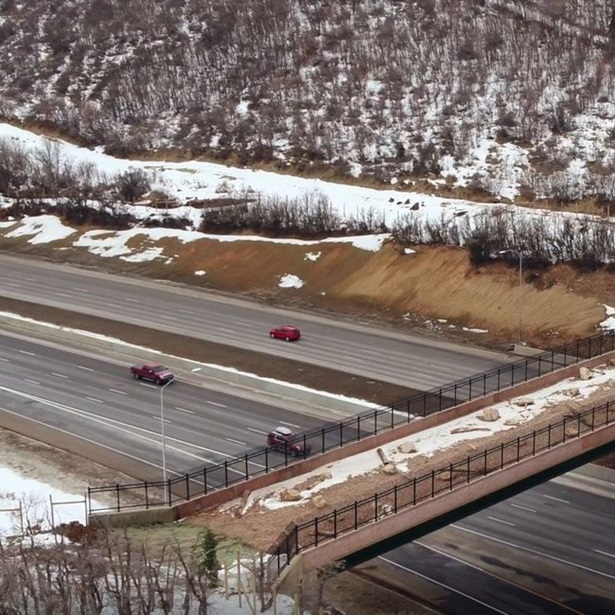Wildlife and People Benefit From New Habitat Connectivity Laws
Oregon is latest Western state to fund wildlife corridor conservation

With little fanfare, state legislatures throughout the American West have been passing bipartisan bills to reconnect wildlife habitat, primarily through new over- and underpasses and improved culverts designed specifically to accommodate animals. In the past two years, Western states have enacted 18 laws involving wildlife corridors and crossings, with every state legislature except those in Arizona, Idaho, and Montana taking action. In each case, the statutes have strong bipartisan support.
In the latest example, on June 26, Oregon’s legislature passed HB 5030, which included $5 million for Oregon’s Department of Fish and Wildlife for wildlife connectivity projects and infrastructure.
Also in June, Nevada enacted AB 112, which committed the state to conserving wildlife corridors, reducing wildlife-vehicle collisions, and building wildlife-friendly transportation infrastructure. In addition to creating a dedicated account for wildlife crossings within the Nevada Department of Transportation (NDOT) and depositing an initial $5 million, the law directs NDOT and the Nevada Department of Wildlife to collaborate on an inventory and prioritization of future wildlife crossing projects for the benefit of wildlife connectivity. NDOT will also develop highway design standards for wildlife crossings and gain authorization to initiate rulemakings to implement the law.
Encouragingly, most Western states—building upon their initial policies and investments— have enacted multiple laws for wildlife connectivity. Utah, for instance, passed a modest $1 million appropriation for wildlife crossings in 2022 and then followed up with a $20 million commitment in 2023. In California, the State Assembly has tackled connectivity through several laws in recent years, appropriating almost $200 million for crossings, setting up a mitigation credit program for connectivity, and directing the identification of “connectivity areas” throughout the state. This will trigger the consideration of wildlife-friendly transportation infrastructure when road projects are planned.
These cumulative successes empower agencies, Tribes, and stakeholders to implement programs that integrate policy and scientific research, leverage funding, and maximize interagency collaboration for the benefit of communities and migrating wildlife. Even better, these bipartisan efforts—and positive outcomes—are likely to continue: Opportunities for more wildlife-friendly infrastructure abound and The Pew Charitable Trusts’ U.S. conservation team remains committed to providing research and policy guidance to states as they continue on this exciting journey.
One emerging topic is how states may simultaneously address the habitat connectivity needs of aquatic and terrestrial species. It’s not just big game and predators that need safe passage across roads; fish, amphibians, and other aquatic life are also threatened by obstructions, which include outdated culverts and other waterway diversions.
With thousands or tens of thousands of culverts underlying local, state, and federal roads, there may be opportunity to redesign and retrofit these structures in ways that make them more resilient to increased flooding events while also better accommodating fish and wildlife passage. In fact, tackling culverts in the context of climate resiliency and wildlife movement complements the work that states are already undertaking on wildlife bridges and underpasses, filling out a comprehensive approach to improving landscape connectivity that is increasingly important to people and nature in the face of climate change.
Matt Skroch directs efforts to conserve wildlife corridors in the West for The Pew Charitable Trusts’ U.S. conservation project.


How States Can Reduce Wildlife-Vehicle Collisions on Roads


Utah's $20 Million Appropriation for Wildlife Crossings


New California Law Protects Wildlife Corridors










